The Indian Health Service in Tucson. . .

...invites you to take a close look at our unique Service Area.
Join in our mission of assuring quality health care services to the Tohono O'odham and Pascua Yaqui. Experience these rich Native American cultures . . . witness the breathtaking drama of the Sonoran Desert and its challenges. Most of all, claim the professional and personal enrichments awaiting you in the "Land of the Crimson Evening" . . .
A Place of Service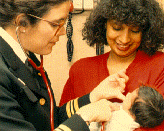
A People of Intrigue
A Land of Awe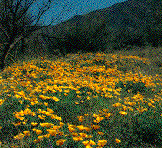
Who We Are
As early as the treaties of the late 1700's, the U.S. Government has recognized its responsibility to Native American peoples. By the mid-1800's, this responsibility began to include medical care in various forms through a number of governmental agencies. Finally, in 1955, the delivery of health care to American Natives was placed with the Public Health Service, a branch of the U.S. Department of Health & Human Services. In response to the growth of the program and the needs of the people, PHS formed the Indian Health Service.
Simply put, the purpose of IHS is to lift the health status of the land's indigenous people to the highest level possible. Delivery of health and medical services of IHS is managed through local Service Units organized under the administration of Area Offices. Each Service Unit serves a specific geographical and tribal sector, working closely with tribal governments and officials to enhance their people's health and, therefore, their lives.
The Indian Health Service in Tucson works with the Tohono O'odham Nation (to.ho.no aah.tum), formerly known as the Papago, and the Pascua Yaqui Tribe (pah.skwah ya.ke) of Arizona. Health service for the Tohono O'odham is centered in Sells, Arizona, capital of the Tohono O'odham Reservation and hub of reservation life. Health centers are also located in the reservation communities of Santa Rosa and San Xavier. Health care in the Sells Service Unit is a combined effort of IHS and the Tohono O'odham Health Department, providing a comprehensive health program of inpatient services, ambulatory care, and community health services.
The Yaqui Service Unit is jointly managed by IHS and the Pascua Yaqui Tribe. Services are rendered directly and indirectly through a non-traditional, innovative system of subcontracts, including some services through a Tucson-based HMO organization.
Both the Sells and Yaqui Service Units are administered by the Office of Health Program Research & Development, an IHS headquarters component located at San Xavier.
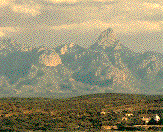 The Service Setting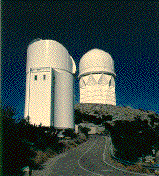
Situated in south-central Arizona, extending south to the U.S./Mexico border, the Tucson service area encompasses the Pascua Yaqui and Tohono O'odham Reservations, the latter being the second largest in the United States, with almost 3 million acres. It is a place of natural beauty unique to the Sonoran Desert . . . vast valleys framed by rugged mountains, all dominated by Baboquivari Peak, sacred mountain of the Tohono O'odham, jutting from the desert floor to an ominous 7730 feet.
The arid desert climate, with an average temperature of 68 degrees Fahrenheit, yields an annual rainfall of only 7 inches, received mostly during dramatic late summer storms thundering through the desert. They bring vital watershed, unforgettable skies, and a sign of hope and renewal to the People who have lived here for centuries. The land is flush with ocotillo, cholla, and saguaro cacti--with a backdrop of mesquite and palo verde trees, creosote, devil's claw, and an array of desert flowers.
Human existence in the desert is marked by contrast. While Kitt Peak National Observatory sits high atop a peak on the Tohono O'odham Reservation, the valleys below are dotted with traditional desert dwellings whose inhabitants continue to live a quiet rural desert life, as their forebears did. Yet, a more urban setting is closer than one might imagine.
Sixty miles east of the Sells Hospital by paved highway lies Tucson, Arizona's second largest metropolitan area, home to nearly 600,000. Tucson, or "The Old Pueblo," is one of the oldest continuously inhabited sites in North America, steeped in a rich heritage of Indian and Spanish influence. It affords all of Southern Arizona limitless entertainment, recreation, shopping, and cultural opportunities.
Tucson is home to the University of Arizona, numerous medical and research facilities, headquarters for a number of major corporations, and, of course, is a favorite location of the film industry. The area is a favored tourist and retirement center, boasting sunbelt attributes and low humidity, with effortless access to Old Mexico, pine forests, snow sports, and endless sightseeing opportunities . . . all within a setting of natural splendor.
The People We Serve
The Tohono O'odham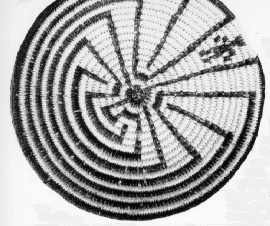
The Tohono O'odham--"Desert People"--are a peaceful, patient people having a strong sense of personal and cultural dignity. For centuries the Sonoran Desert has been their homeland. Tohono O'odham society is based in the family, traditionally consisting of the parents, their children, and their sons' families. The individual has never been a focus--cooperation and consensus have always ruled. Even today, proposed tribal legislation is often referred back to local councils and villages for decision making--consistent with traditional ways.
The Tohono O'odham are closely linked to the land. Mother Earth--a spiritual entity and provider of all that is necessary. Baboquivari Peak is inhabited by 'Etoi, The Creator, and is central to much of the intriguing Tohono O'odham lore and oral tradition.
First sustained contact with Europeans was in 1698 with Father Kino's missionary effort. Dealings with the "White Man" began in the 1850's, and with the Gadsden Purchase in 1853, most of the homeland became part of the United States.
The traditional Tohono O'odham view of wellness revolves around maintaining spiritual harmony among the individual, the family, the community, and the land. . . all being interconnected. Illness is thought to be the result of spiritual disharmony. When this occurs, the medicine men and women, or Mak'ai, are sought out. They are regarded as having special powers and remain central to the health of the community and the overall scope of this complex health system.
The Pascua Yaqui . . .
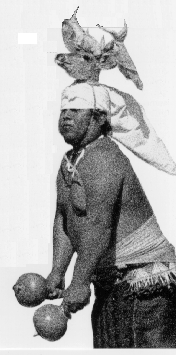
originally inhabited the length of Rio Yaqui in southern Sonora, Mexico. With abundant water, they formed concentrated settlements, or rancherias, and practiced farming and hunting. The intrusion of Spaniards in 1533 was strongly and successfully resisted by the Yaqui, but they allowed Jesuit missionaries to become established. Quiet years passed and the gradual mixing of Catholic and Yaqui beliefs began.
After the Mexican War of Independence from Spain in 1821, the Yaqui resisted the Mexican government, often with bloody conflicts, and gradually began to migrate north into Arizona. By 1919, only three original Yaqui rancherias remained. The best known Arizona Yaqui village was Old Pascua on the outskirts of Tucson. With tribal recognition and acquisition of reservation land just west of the San Xavier District in 1978, the village of New Pascua was built; it remains the seat of Yaqui tribal government.
The rich Yaqui ceremonial tradition is a blend of Uto-Aztecan beliefs and Jesuit Miracle Plays. Central is the Deer Dancer, a ritual representation rising from early ceremonies held on the eve of a hunt. Colorful Yaqui fiestas are times of religious renewal for the People and occasions for mingling with fellow Yaqui, Mayo cousins, and Tohono O'odham neighbors.
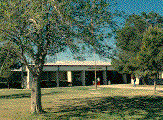 The Facilities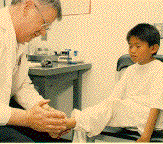
The IHS Indian Hospital in Sells . . .
A community of 3500, was opened in 1961. A modern 37-bed facility with JCAHO accreditation, the hospital is the central component of the Sells Service Unit, providing general medical and primary care on an inpatient and outpatient basis.
Two satellite facilities are established: the San Xavier Health Center, a large outpatient facility on the outskirts of Tucson, and the Santa Rosa Clinic, a small outpatient facility located in the very rural setting of the north-central sector of the Tohono O'odham Reservation.
A professional staff of physicians, physician assistants, dentists, nurses, and auxiliary technical support personnel administer both inpatient and ambulatory services through the hospital and clinics. Specialties among the medical staff include internal medicine, pediatrics, psychiatry, and family practice. Some emergency services are provided at the Sells Hospital; critical-care patients are transferred to one of several Tucson or Phoenix area hospitals.
Hospital admissions approximate 1200 patients annually, including 50-100 obstetrical deliveries, with another 200-300 deliveries being performed through contracts with Tucson facilities. Exclusive of dental visits, ambulatory visits number approximately 20,000 per year. The Hospital employs a computerized database to enhance its research and diagnostic efforts to serve patients in all three facilities.
As a group, the Tohono O'odham have one of the highest occurrences of Type II Diabetes in the world. The study, treatment, and prevention of diabetes is a major concern. Diabetes Prevention Projects are in place in the schools and community, a collaborative effort of IHS and the Tohono O'odham Health Department. The programs, including several rural field units, are geared toward educating in methods of coping with and preventing the disease.
The Challenge
Our challenge is to meet and surpass the goals set by the Public Health Service and IHS. We require dedicated, visionary health professionals at all levels to join our ranks.
We seek experienced physicians, nurses, and support specialists--who are able to assume leadership roles in the future development of our work--as well as newly graduated health professionals and student interns.
Entering practice in an unfamiliar socio-cultural and environmental setting may prove to be one of the richest challenges of your life. Through hard work and commitment, many have found themselves in the unique situation of making a difference in others' lives, while at the same time gaining personal growth and sensitivity.
To learn more about the Indian Health Service in Tucson and the professional opportunities available to you, please contact us at the address below. The "Land of the Crimson Evening" awaits you . . .
Tucson Area Indian Health Service
7900 S. J. Stock Road
Tucson, AZ 85746-7012
Phone: 520-295-2405
FAX: 520-295-2602
Tucson Area IHS | 







